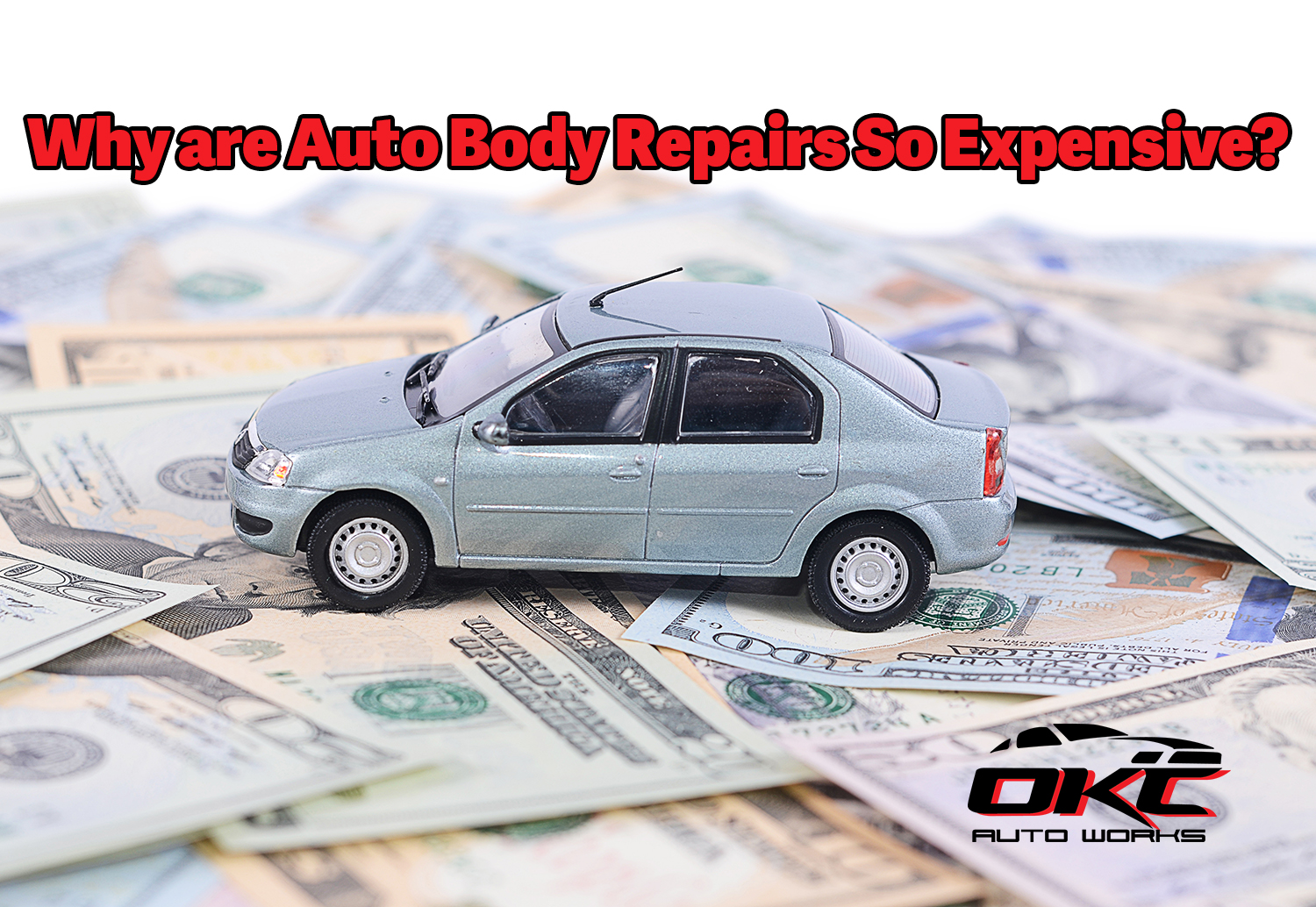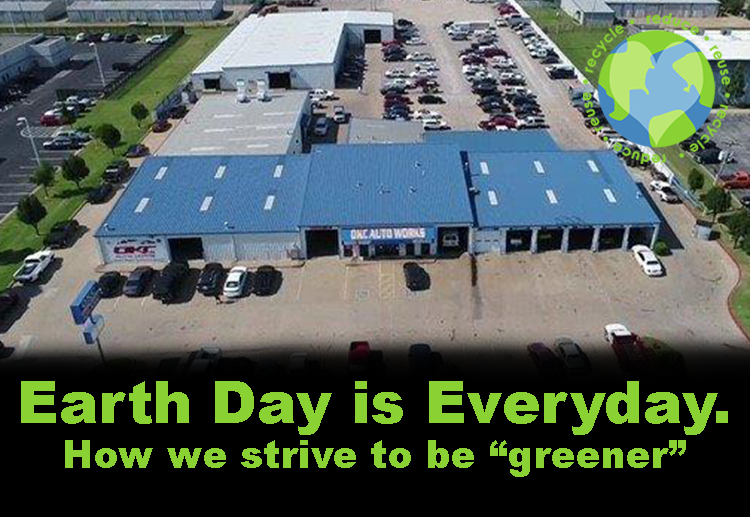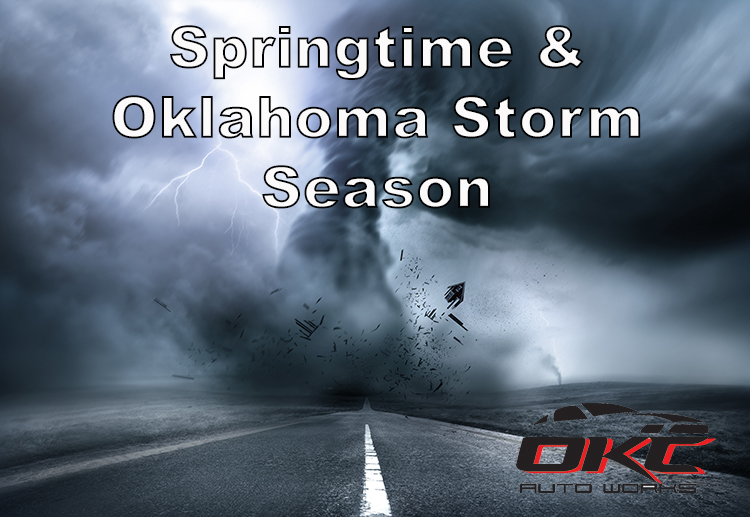If you have had auto body work done in recent years, then you know just how expensive it can be. In fact, you may have even wondered, “Why are auto body repairs so expensive?” This is certainly a question that many of our estimators have had customers ask them after receiving an estimate for a repair. There are actually many factors that play a part in the exorbitant costs of auto body repair, most of which is not in the control of the collision repairer facility. Here we will break it all down so you won’t have to wonder about such things again, well, at least as it pertains to auto body costs anyway.
Necessary pre- and post-diagnostic scans
All late-model vehicles require a pre-diagnostic scan as well as a post diagnostic scan to ensure that the sensors are working properly. In order to meet this requirement, shops must invest in some expensive tools and equipment. Additionally, the collision repair shops invest in ongoing technician training, so they are able to not only determine what work is needed but also training on how to safely perform the repair to manufacturer specifications. When you consider the cost of equipment, tools, and ongoing training, a collision repair facility has a significant cost of time and money to ensure that your car is repaired properly.
Increase in Electrical Components
The modern vehicle has all kinds of small electrical components, like cameras and sensors, throughout its body. In the event of an auto accident, it’s possible many sensors will have to be replaced which can become costly. And it’s not just sensors, those LED daytime running headlights or xenon lights can cost thousands of dollars to replace. Those fancy bells and electronic whistles come with a price tag and it’s often much higher than one expects.
Modern sensors may need to be recalibrated.
Since we just talked about the cost of sensors to replace, might as well mention some other associated costs for those expensive gadgets and electronics. Those useful Advanced Driver Assistance Systems (ADAS) that include high-tech sensors and cameras, must be reset and recalibrated following a collision repair. These reset and recalibrated processes can be very labor intensive, which equates to more money on a repair invoice.
Unibody vs. Body-on-Frame
So, vehicles used to be constructed with a body on frame design, meaning the body pieces were constructed onto a strong inner frame. Anything else added to the vehicle could be considered purely cosmetic as it would not have added to the strength or overall structure of the vehicle. This is a handy and cost saving design when one has body damage as the damaged pieces can be removed and the new body pieces welded or bolted on. Some vehicles, mostly trucks & SUVs, still use the body-on-frame design, but many newer vehicles (especially cars) have moved to a unibody construction.
A unibody construction is exactly what you would expect, it is a whole-body structure. In this modern unibody design, every piece places a part in the overall strength and structure of the vehicle body. There are several benefits to the unibody design. For one, the vehicle is generally lighter since it doesn’t have a heavy steel frame. Additionally, it handles better, has greater fuel efficiency, and should be a more comfortable ride since the lack of a rigid frame allows for better shock absorption. A unibody constructed vehicle is generally considered safer than the old body-on-frame design. While the unibody offers a lot, it typically requires more extensive repairs when it sustains damage, and that usually equates to a higher cost on the repair.
3-stage waterborne paint systems
Auto paint has evolved a lot over the past 50 years. No longer are most shops using the enamel paints that were smelly, took a long time to cure, and were bad for the environment. Instead, most auto manufacturers use 3-stage waterborne paint systems these days. Thus, collision repair shops should use the same system to create a seamless looking repair that looks like a factory paint job. This newer paint system has required shops to invest in new equipment and additional training for collision repair technicians and painters.
Not You Grandpa’s Steel
These days vehicles use high-strength steel as it’s typically stronger and in many cases lighter, allowing vehicles to drop some weight and improve fuel economy. While there is a benefit to using high-strength steel, it is less pliable. Where milder steels can be manipulated back to their original form using heat and other methods, high-strength steel needs replacing far more often after an auto accident in order to keep the safety and integrity of the vehicle to the highest of standards. In cases where the high-strength steel can be repaired, it requires specialized equipment and training (which of course means more money yet again).
Fewer Structural Components Sectioned
Sectioning involves replacing only a damaged portion of the component rather than the entire component. This cost-saving process used to be done more often than it is today. While it does decrease the cost of a repair, many manufacturers these days do not allow such within their specification guidelines. Repair facilities follow manufacturer guidelines so as not to void your auto warranty, but also to ensure the integrity of the repair.
Additional Requitements for Corrosion Protection & Metal Conditioning
As just mentioned, a quality repair facility is going to follow manufacturers’ recommended guidelines for a repair. Many manufacturers have specifications on applying corrosion protection such as seam sealers, foam fillers, and other types of adhesives. These products are used in various stages of the repair process. But for you the consumer, who doesn’t see these products or understand the necessity of use, it may just appear as another line item in a growing list of costs to the repair.
Tools and Training Requirements
Today’s vehicles are much more sophisticated than those of the past. As vehicles have become more complex, many makes & models now require specialized tools. And while some special tools come with the vehicle in rare cases, most often they do not. This requires auto body shops to have certain tools on hand for specified repairs. Additionally, as you might expect, more training is required…all which costs money.
Hidden Damage
Some collision repairs customers have gotten upset about the discrepancies between the costs of the insurance adjuster’s initial estimate versus the auto body shop’s final estimate. Rest assured, estimate differences between an initial estimate and a final estimate is normal. This is because of hidden damage. Now, while the phrase “hidden damage” may bring up negative connotations it shouldn’t. There’s a lot of things going on behind the bumper cover, inside doors, et cetera. When writing an initial estimate one can only write what they can visibly see, however; once the vehicle gets in the shop and things are disassembled for repair it’s easier to see damages that were not visible before.
The Cost of the Auto Body Shop
There are a lot of costs to a body shop for their repairs of your vehicle that you have probably not thought of. For example, shops must pay fees for waste disposal, pollution, and other costs involved in ensuring environmental regulations are followed. Additionally supplies like clips, screws, and paint have all increased in cost over the last several years (like everything else).
Lifetime Guarantees
A quality collision repair facility guarantees its work. To do this and not lose their shirt in the costs of free reworks, repairs need to be performed so they last. This means using the best parts possible, following all manufacturer guidelines, and not taking shortcuts on the repairs. If you have ever heard the phrase “you get what you pay for” then you should understand that quality work isn’t cheap.
We hope by sharing this information it helps you understand why it costs so much to get your vehicle repaired. Of course, we didn’t even touch the amount of labor hours it can take to repair a vehicle, because obviously the time it takes to do a repair increases the cost – a bumper repair is certainly going to cost less than repairing the entire side of a pickup would after all. While the very best way to mitigate collision repair costs is to simply never get into an accident, that just isn’t always avoidable – I mean, they are called accidents for a reason. At least now you can better understand why the costs associated for auto body repair are what they are. If you need an estimate on your repair, know that we are here for you! (405) 634-8200




